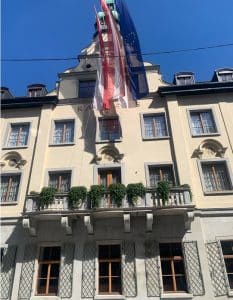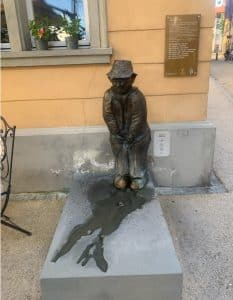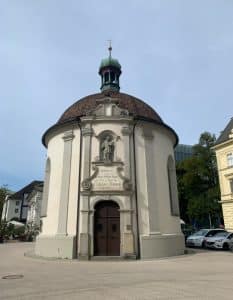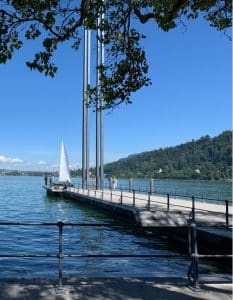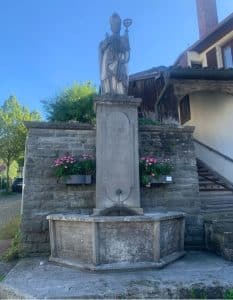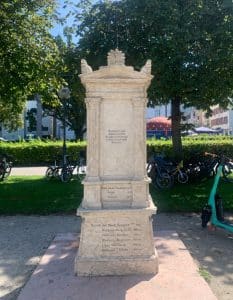While Bregenz, a charming city located on the eastern shores of Lake Constance in Austria, is known for its vibrant arts scene and picturesque landscapes, it also boasts a rich historical heritage. One such testament to this past is Ehregutaplatz – an archaeological site that offers visitors a glimpse into the ancient world.
A Brief History of Ehregutaplatz
Ehregutaplatz lies within the heart of Bregenz’s old town district and has been recognized as one of the most significant archaeological sites in Western Austria. It was first discovered during construction work in 1983 when workers stumbled upon remnants dating back to Roman times. The findings were so extensive that archaeologists spent several years excavating and studying them before finally opening up the area for public viewing in 1997.
The Roman Settlement
Evidence from artifacts found at Ehregutaplatz suggests that it was once part of Brigantium – a large Roman settlement established around 15 BC under Emperor Augustus. This bustling port city served as an important hub along Via Claudia Augusta, connecting Italy with Germany across the Alps.
The Romans built impressive structures here including baths, houses with heated floors (hypocausts), workshops, warehouses and even temples. Notably among these finds are remains of two large buildings believed to be administrative or commercial centers due to their size and proximity to each other.
Insights into Ancient Life
Beyond architectural marvels, numerous everyday items have been unearthed at Ehregutaplatz too – pottery shards, tools used by blacksmiths or carpenters, coins minted during various periods throughout Rome’s history etc., which provide valuable insights into life during those times. For instance: ceramic fragments reveal dietary habits; metal objects hint at local trades and industries; coins tell us about economic conditions and political events.
Preserving the Past
One of the most commendable aspects of Ehregutaplatz is its commitment to preserving these historical remnants. Rather than removing artifacts for display elsewhere, they have been left in situ – exactly where they were found – allowing visitors to see them in their original context. This approach not only respects the integrity of site but also enhances understanding by providing a more authentic experience.
In addition, there’s an onsite information center that provides detailed explanations about each discovery along with graphics illustrating how Brigantium might have looked during Roman times. There are also guided tours available for those interested in learning more about this fascinating period of history.
A Must-Visit Attraction
Ehregutaplatz is undoubtedly a must-visit attraction for anyone traveling to Bregenz. Its rich archaeological finds offer a unique opportunity to step back into time and visualize life as it was over 2000 years ago. Whether you’re a history buff or simply curious about ancient civilizations, this site promises an enlightening and memorable experience.
Visiting Ehregutaplatz
Ehregutaplatz is conveniently located within walking distance from many popular attractions including Martinsturm (Martin’s Tower), Vorarlberg Museum and Kunsthaus Bregenz (Art House). It’s open year-round although hours vary depending on season so be sure to check before planning your visit.
To make most out of your trip here, we recommend allocating at least couple hours for exploration. Don’t forget comfortable shoes as some areas may require bit climbing due uneven terrain!
Conclusion
In conclusion, Ehregutaplatz serves as a remarkable testament to Bregenz’s rich historical past. Its well-preserved archaeological remains, informative displays and immersive tours make it an invaluable resource for understanding our collective heritage. So next time you’re in town, be sure to add this hidden gem to your itinerary – you won’t regret it!
Frequently asked questions
What is the significance of Ehregutaplatz in Bregenz?
Ehregutaplatz is a central square located in Bregenz, the capital of Vorarlberg, Austria. It’s a significant location due to its historical relevance and architectural beauty. The square features beautiful buildings with intricate designs that represent different periods in Austrian architecture. Additionally, it serves as an important meeting point for locals and tourists alike with several cafes, restaurants, shops around.
How can I reach Ehregutaplatz when visiting Bregenz?
Bregenz has an efficient public transport system which makes getting around quite easy. You can take any bus heading towards ‘Bergen Zentrum’ or ‘Bahnhof’ from where you can easily walk to Ehregutaplatz. If you’re driving, there are several parking lots nearby including Parkhaus Lathofparkplatz and Parkgarage GWL.
What attractions are available near Ehregutaplatz?
The area surrounding Ehregutaplatz offers numerous attractions for visitors of all ages and interests. The Kunsthaus Bregenz (KUB), one of Europe’s leading galleries for contemporary art is just few steps away from the plaza. The Vorarlberg Museum provides insights into local history while the famous Lake Constance offers stunning views and water-based activities like swimming or boat tours during summer months.
Are there any annual events held at Ehrguta Square?
Absolutely! Throughout the year numerous cultural events take place at this popular gathering spot such as Christmas Market during winter season offering handmade crafts and traditional food & drinks; Summer Festivals featuring live music performances; Art Exhibitions showcasing works by local artists etc., making it a vibrant hub throughout all seasons.
What facilities are available at Ehregutaplatz for visitors?
Ehregutaplatz is well-equipped with public amenities to ensure a comfortable visit. There are several cafes and restaurants offering local and international cuisine, as well as numerous shops selling everything from souvenirs to fashion items. Public restrooms can be found nearby, while seating areas around the square provide space for rest and relaxation. The area is also wheelchair accessible making it suitable for all types of visitors.




